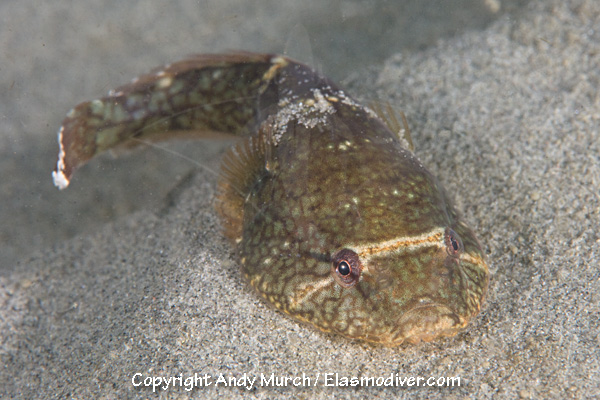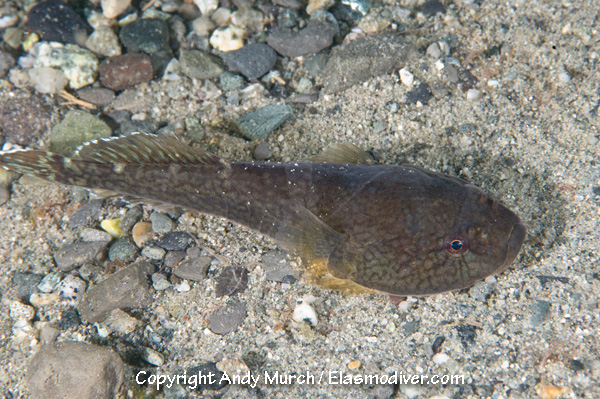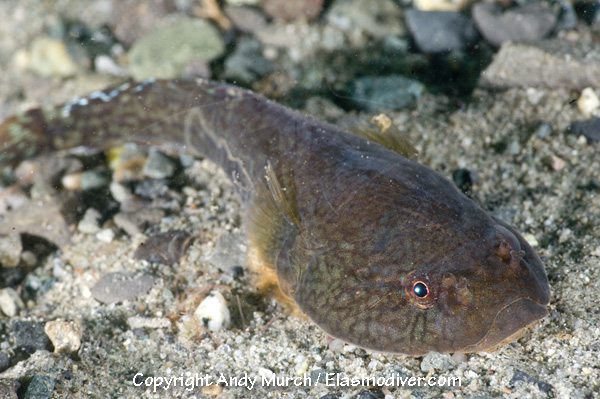
Gobiesox maeandricus
FAMILY
Gobiesocidae
TAXONOMY
Gobiesox maeandricus Girard, 1858, San Luis Obispo, California,
United States.
OTHER COMMON NAMES
None known.
PHYSICAL CHARACTERISTICS
There are 13–16 dorsal soft rays; 12–14 anal soft fin rays; a
rounded caudal fin; and short, rather broad pectoral fins with a
fleshy palp that bridges between the base of the fin and the gill
opening. The color pattern consists of a light olive-brown or
cherry-red background with either dark reticulations or mottled
shades of lighter color and a series of white bars between
the eyes. In juveniles the white bars also run along the back
and on the edge of the caudal fin. Grows to about 6.3 in (16
cm) in length. Males tend to be larger than females.
DISTRIBUTION
Eastern Pacific from southeastern Alaska south to southern
California; also found at Revillagigedo Island off Baja California,
Mexico.
HABITAT
Lives among algae or under rocks in the intertidal zone and in
the upper canopy of kelp forests, to a depth of 26 ft (8 m). The
ability to breathe atmospheric air with its gills allows it to tolerate
exposure, if it is kept moist under rocks or algae.
BEHAVIOR
Males maintain territories. Both males and females tend to be
somewhat secretive, clinging to surfaces and moving only to
feed or interact with others.
FEEDING ECOLOGY AND DIET
Feeds upon small mollusks and crustaceans found on rocks, algae,
and kelp.
REPRODUCTIVE BIOLOGY
As with others in this genus, this species likely spawns demersal
eggs in a nest prepared by a male within his territory.
Spawning may take several hours. Males provide parental care.
The larvae are planktonic.
CONSERVATION STATUS
Not listed by the IUCN.
SIGNIFICANCE TO HUMANS
Collected mainly for public aquaria.
Photo Gallery of - Northern clingfish





 Animalia Life
Animalia Life